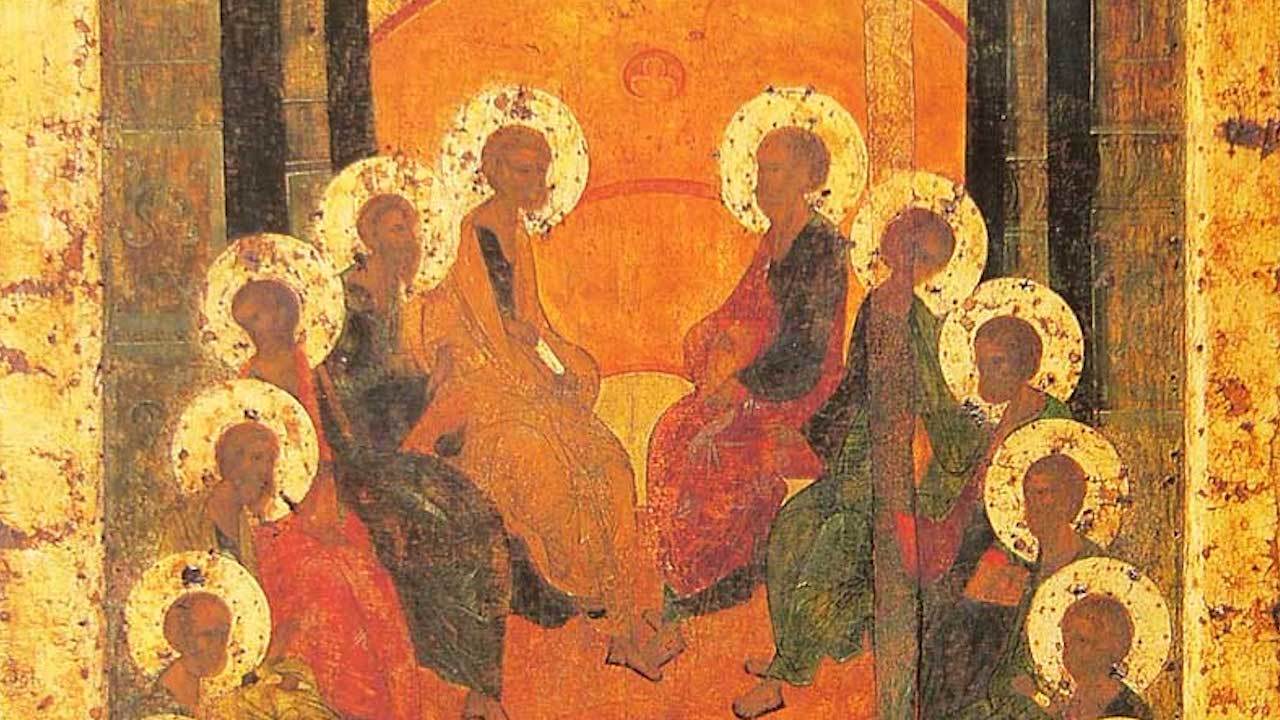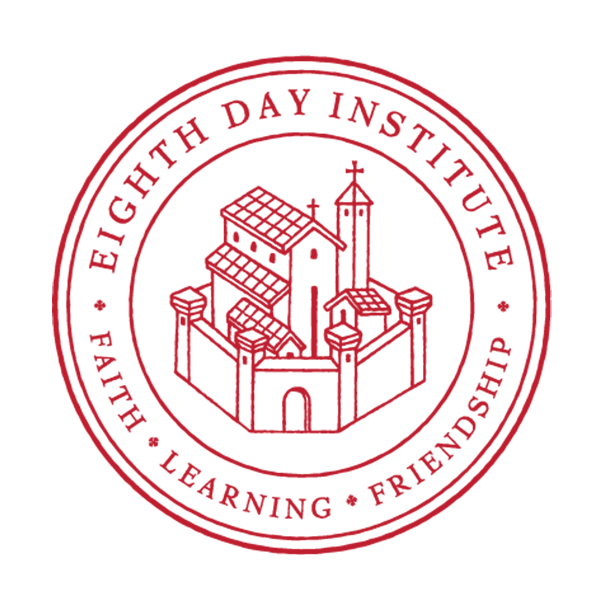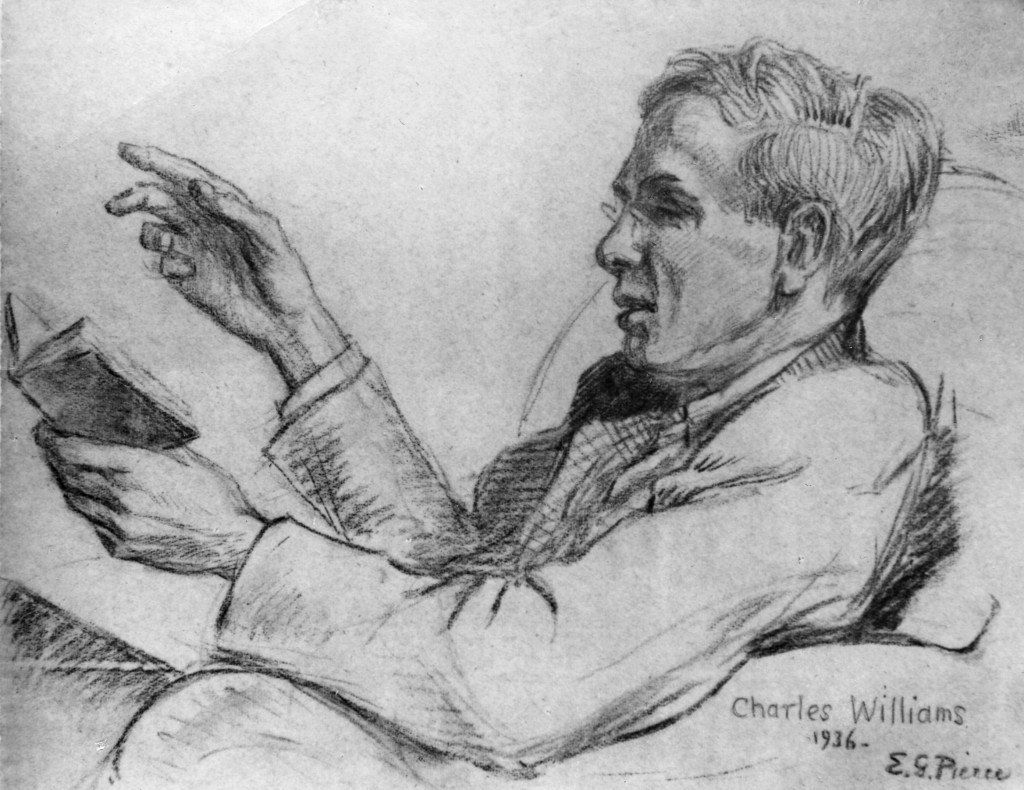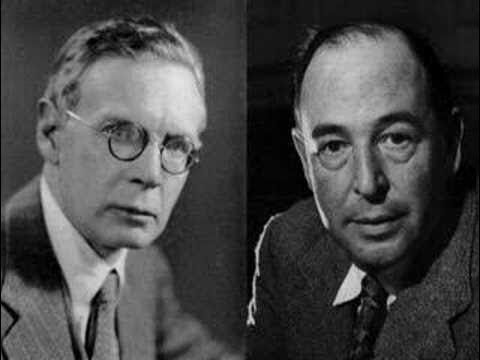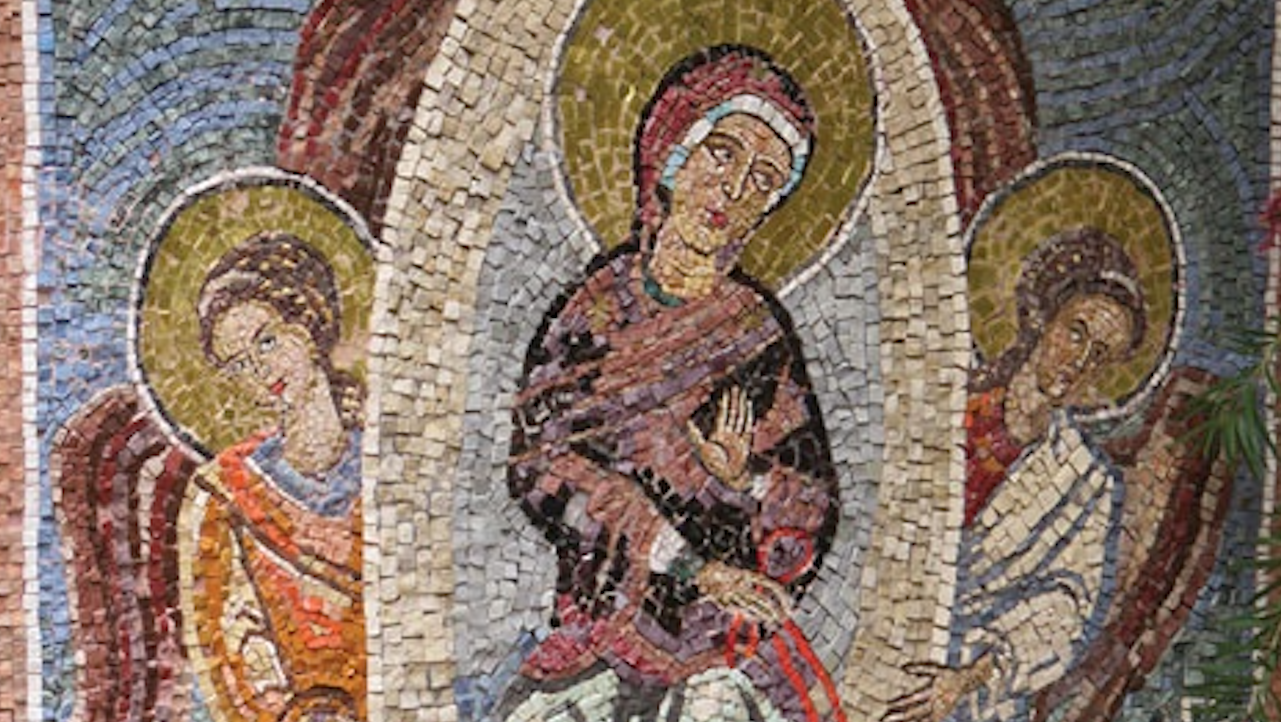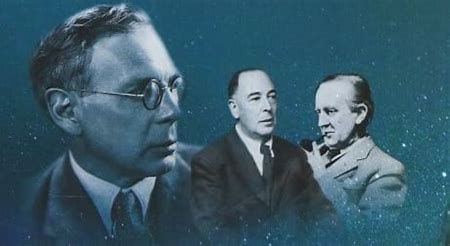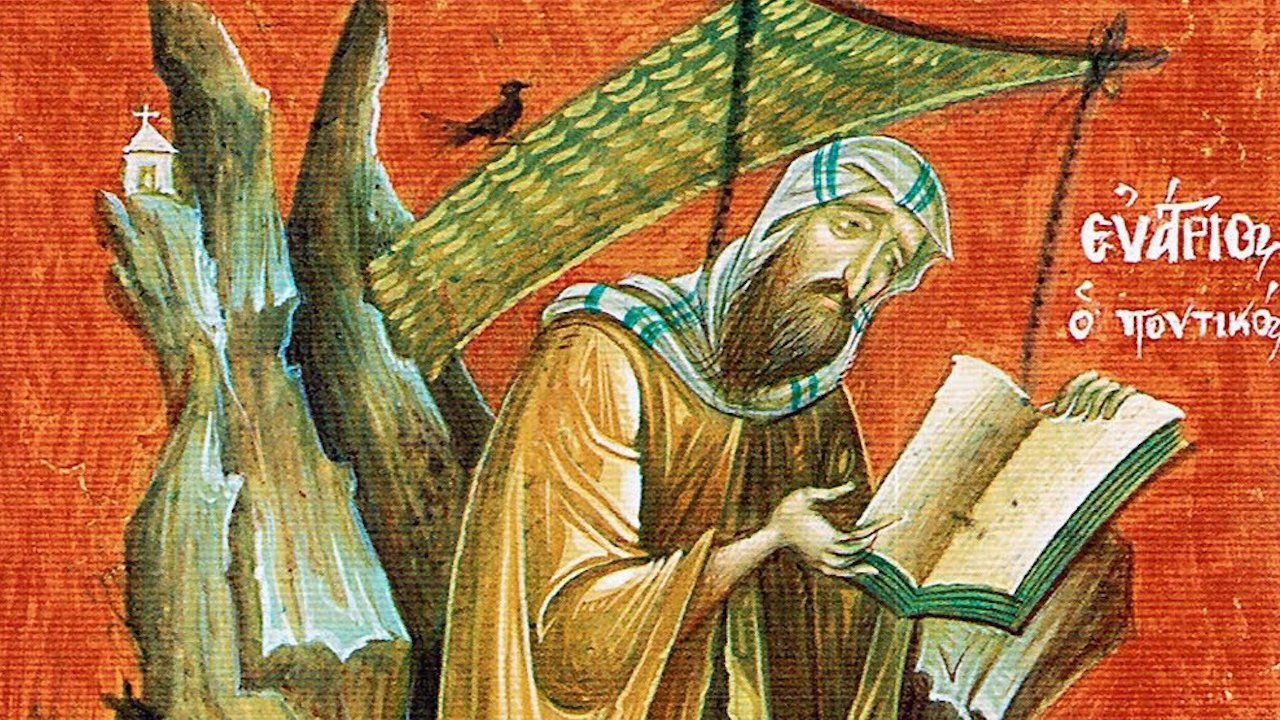Strictly speaking, the Messianic Community, gathered by Jesus the Christ, was not yet the Church, before His Passion and Resurrection, before “the promise of the Father” was sent upon it and it was “endued with the power from on high,” “baptized with the Holy Ghost” (cf. Lk 24:49 and Acts 1:4-5), in the mystery of Pentecost. Before the victory of the Cross disclosed in the glorious Resurrection, it was still sub umbraculo legis
[under the shadow of the law]. It was still the eve of the fulfillment. And Pentecost was there to witness to and to seal the victory of Christ. “The power from on high” has entered into history. The “new aeon” has been truly disclosed and started. And the sacramental life of the Church is the continuation of Pentecost.
The descent of the Spirit was a supreme revelation. Once and for ever, in the “dreadful and inscrutable mystery” of Pentecost, the Spirit-Comforter enters the world in which He was not yet present in such manner as now He begins to dwell and to abide. An abundant spring of living water is disclosed on that day, here on earth, in the world which had been already redeemed and reconciled with God by the Crucified and Risen Lord. The Kingdom comes, for the Holy Spirit is the Kingdom (cf. St Gregory of Nyssa, De oration Dominica, 3). But the “coming” of the Spirit depends upon the “going” of the Son (Jn. 16:7). “Another Comforter” comes down to testify of the Son, to reveal His glory and to seal His victory (Jn. 15:26; 16:7, 14). Indeed in the Holy Spirit the Glorified Lord Himself comes back or returns to His flock to abide with them always (Jn. 14:18, 28). . . . Pentecost was the mystical consecration, the baptism of the whole Church (Acts 1:5). This fiery baptism was administered by the Lord: for He baptizes “with the Holy Spirit and with fire” (Matt. 3:11; Lk. 3:16). He has sent the Spirit from the Father, as a pledge in our hearts. The Holy Ghost is the spirit of adoption, in Christ Jesus, “the power of Christ” (2 Cor. 12:9). By the Spirit we recognize and we acknowledge that Jesus is the Lord (1 Cor. 12:3). The work of the Spirit in believers is precisely their incorporation into Christ, their baptism into one body (1 Cor. 12:13), even the body of Christ. As St. Athanasius puts it: “being given drink of the Spirit, we drink Christ.” For the Rock was Christ (St. Athanasius, Epistle 1 ad Serapionem).
By the Spirit Christians are united with Christ, are united in Him, are constituted into His Body. One body, that of Christ: this excellent analogy used by St. Paul in various contexts, when depicting the mystery of Christian existence, is at the same time the best witness to the intimate experience of the Apostolic Church. By no means was it an accidental metaphorical image: it was rather a summary of faith and experience. With St. Paul the main emphasis was always on the intimate union of the faithful with the Lord, on their sharing in His fulness. As St. John Chrysostom has pointed out, commenting on Col. 3:4, in all his writings St. Paul was endeavoring to prove that the believers “are in communion with Him in all things” and “precisely to show this union does he speak of the Head and the body” (Col. Hom. 7). It is highly probable that the term was suggested by the Eucharistic experience (cf. 1 Cor. 10:17), and was deliberately used to suggest its sacramental connotation. The Church of Christ is one in the Eucharist, for the Eucharist is Christ Himself, and He sacramentally
abides in the Church, which is His Body. The Church is a body indeed, an organism, much more than a society or a corporation. And perhaps an “organism” is the best modern rendering of the term to soma, as used by St. Paul.
Still more, the Church is the body of Christ
and His “fulness.” Body
and fulness
(to soma
and to pleroma)—these two terms are correlative and closely linked together in St. Pauls’ mind, one explaining the other: “which is His body, the fulness of Him Who all in all is being fulfilled” (Eph. 1:23). The Church is the Body of Christ because it is His complement. St. John Chrysostom commends the Pauline idea just in this sense. “The Church is the complement of Christ in the same manner in which the head completes the body and the body is completed by the head.” Christ is not alone. “He has prepared the whole race in common to follow Him, to cling to Him, to accompany His train.” Chrysostom insists, “Observe how he (i.e. St. Paul) introduces Him as having need of all the members. This means that only then will the Head be filled up, when the Body is rendered perfect, when we are all together, co-united and knit together” (Eph. Hom. 3). IN other words, the Church is the extension and the “fulness” of the Holy Incarnation, or rather of the Incarnate life of the Son, “with all that for our sakes was brought to pass, the Cross and tomb, the Resurrection the third day, the Ascension into Heaven, the sitting on the right hand” (Liturgy of St. John Chrysostom, Prayer of Consecration).
The Incarnation is being completed in the Church. And, in a certain sense, the Church is Christ Himself, in His all-embracing plenitude (cf. 1 Cor. 12:12). This identification has been suggested and vindicated by St. Augustine: “Non solum nos Christianos factos esse, sed Christum” [“We have become not only Christians, but Christ”]. For if He is the Head, we are the members: the whole man is He and we—“totus homo, ille et nos—Christus et Ecclesia” [“the whole man, Him and us—Christ and the Church”]. And again: “For Christ is not simply in the head and not in the body (only), but Christ is entire in the head and body” (“non enim Christus in capite et non in corpore, sed Christus totus in capite et in corpore”; Gospel of John, tract 21, 8). This term totus Christus
(Gospel of John tract. 28) occurs in St. Augustine again and again, this is his basic and favorite idea, suggested obviously by St. Paul. “When I speak of Christians in the plural, I understand one in the One Christ. Ye are therefore many, and ye are yet one: we are many and we are one” (“cum plures Christianos appello, in uno Christo unum intelligo”; Ps. 127, 3). “For our Lord Jesus is not only in Himself, but in us also” (“Dominus enim Jesus non solum in se, sed et in nobis”; Ps. 90 enarr.
1, 9). “One Man up to the end of the ages” (“Unus homo usque ad finem saeculi extenditur”; Ps. 85, 5).
The main contention of all these utterances is obvious. Christians are incorporated into Christ and Christ abides in them—this intimate union constitutes the mystery of the Church. The Church is, as it were, the place and the mode of the redeeming presence of the Risen Lord in the redeemed world. “The Body of Christ is Christ Himself. The Church is Christ, as after His Resurrection He is present with us and encounters us here on earth” (A. Nygren, Corpus Christi
in en bok om Kyrkan, av Svenska teologer, Lund, 1943, p. 20). And in this sense one can say: Christ is the Church. “Ipse enim est Ecclesia, per sacramentum corporis sui in se universam eam continens” [“For He Himself is the Church, containing in Himself the universal Church through the sacrament of His Body”; St. Hilary of Poitiers in Ps. 125, 6). Or in the words of Karl Adam: “Christ, the Lord, is the proper Ego of the Church” (Das Wesen des Katholizismnus, 4 ausgabe, 1927, p. 24).
The Church is the unity of charismatic life. The source of this unity is hidden in the sacrament of the Lord’s Supper and in the mystery of Pentecost. And Pentecost is continued and made permanent in the Church by means of the Apostolic Succession.
~From “The Church: Her Nature and Task” in The Universal Church in God’s Design: An Ecumenical Study Prepared Under the Auspices of the World Council of Churches
(New York: Harper & Brothers, 1948), 43-58 at 48-51.
